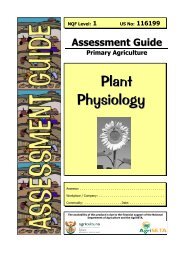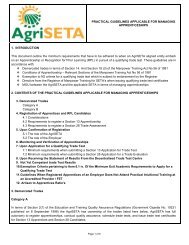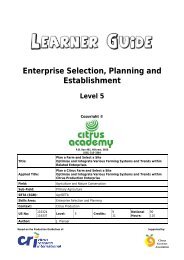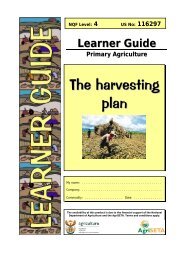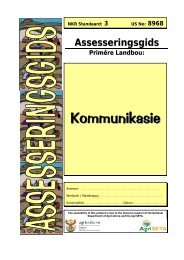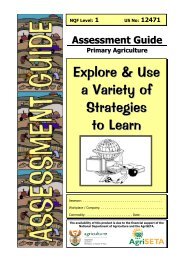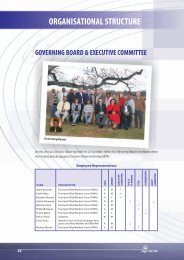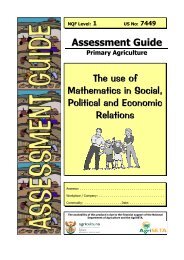Evaluate Basic External Animal Anatomy and Morphology - AgriSETA
Evaluate Basic External Animal Anatomy and Morphology - AgriSETA
Evaluate Basic External Animal Anatomy and Morphology - AgriSETA
- No tags were found...
Create successful ePaper yourself
Turn your PDF publications into a flip-book with our unique Google optimized e-Paper software.
<strong>Evaluate</strong> <strong>Basic</strong> <strong>External</strong> <strong>Animal</strong> <strong>Anatomy</strong> <strong>and</strong> <strong>Morphology</strong>Primary Agriculture NQF Level 1 Unit St<strong>and</strong>ard No: 11617324Illustrations of the wing <strong>and</strong> feathers ReproductionThe pigeon, like most birds, is oviparous (lays eggs that hatch outside thebody). The female lays two oval, white eggs. The hen (female) <strong>and</strong> thecock (male) take turns to sit on the eggs in order to keep them at aconstant temperature. This is called incubation. BreathingThe pigeon uses lungs for breathing.ConceptIdentifying the different basicanatomical parts of birds.Identifying by means of external partsthe class to which the birds belong.Identifying <strong>and</strong> naming the externalvisible divisions or parts of a bird.Identifying gross abnormalities in theexternal parts of birds.Giving reasons for the various steps inthe lifecycle <strong>and</strong> identifying thevulnerability of birds in the differentstages.I underst<strong>and</strong>this conceptQuestions that I still wouldlike to askVersion: 01 Version Date: July 2006



